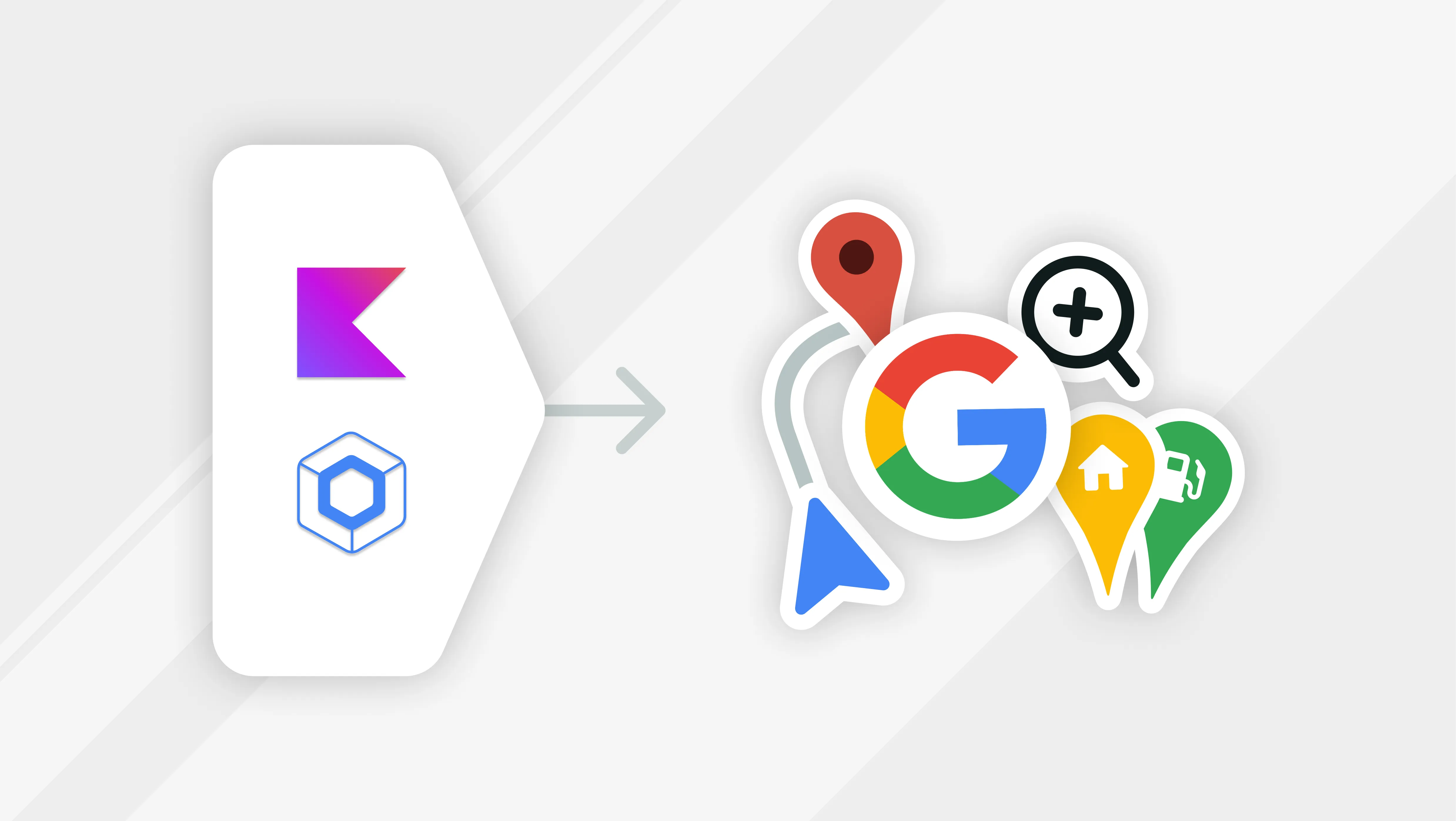Your Guide to App Innovation at the Enterprise Level


At the enterprise level, innovation remains critical. When a company operates under a pro-innovation model, it’s primed to make fast pivots and stay in the lead. Giants like 3M integrate innovation into their operational models, requiring a specific amount of revenue to come from new products. As a result, teams get the freedom to experiment and try new things.
Unfortunately, enterprises can become bogged down with the need to follow strict rules that slow their progress on the road to innovation. Organizations struggle to weave innovation into their corporate DNA if it wasn’t there from the beginning. What’s the solution? Anonymous, empowered teams that work independently with limited oversight. But unless those teams are located in a separate facility, they may fall prey to status quo expectations and innovation-curbing hurdles.
For innovation to happen in enterprises, there need to be executive sponsors that embrace the “break things and move fast” mantra. Many C-suite professionals are hesitant to urge people to fail, but failure is what innovation’s all about. That’s why smaller, more responsive competitors with higher risk tolerances can and do steal market share from legacy companies.
Innovation in Enterprises: The Opportunities
Does this mean enterprises are doomed to lack innovation? Not at all. Bigger organizations can be just as agile and reactive to industry changes as nimble startups. After all, Fortune 500s have the best of all worlds with their colossal reach, brand recognition, and vast resources.
Procter & Gamble is a great example of enterprise innovation in action. It constantly leverages digital products to engage with consumers directly. Why? Blame Amazon and its innovative relationship with customers or smaller boutique businesses like Drunk Elephant, which captures the interest of younger consumers. Both inspire P&G’s culture of learning that accepts innovation as a methodical process that’s vital to its long-term endurance and permanence as a market force. In return for its willingness to innovate, P&G continues to present itself as a force to be reckoned with.
Promoting Innovation Within the Enterprise
How do behemoths like 3M or P&G promote innovation? Intentional learning buoyed by innovation processes like Killer Questions, the DaVinci method, Design Thinking, and Lean Startup. Each follows a similar rhythm of moving from hypothesizing to testing to iterating and back again — while enjoying the freedom to fail in order to learn and grow.
As an example, a diverse and innovative enterprise team made up of varying specialists (e.g., designers, developers, marketers, and data analysts) might first examine changes in consumer behavior or expectations. After identifying those changes, the team could then work to create testable, small-scale solutions with a goal of eventually hitting on an innovation that will move the needle.
Any company can innovate. There are, however, a few key industries begging for innovation to transform operations:
- Consumer Packaged Goods The consumer packaged goods (CPG) industry has historically relied on retailers for everything from consumer insights to in-store experiences. However, CPGs are now trying to gain control over the data science and consumer experience by investing in direct-to-customer sales channels. It’s a bold, innovative move that’s been necessitated by tightening margins and changing sentiments.
- Education When COVID-19 lockdowns occurred, many schools switched to online learning. The switch proved important for spotlighting the problems inherent in education, including social and economic disparities facing children and families. Other issues, such as the ballooning cost of higher education, make this field ripe for disruption.
- Fintech The merger of finance and technology has spotlighted the need for safer, smarter, and more affordable online financial transactions. Already, innovators have brought the world the EMV/Chip-and-PIN cards and peer-to-peer payments. More innovations would be welcome in this burgeoning space.
- Grocers and Retailers Before the pandemic, grocers and retailers were already innovating due to intense competition from companies like Amazon. Now, they’re doing far more than thinking outside the box in terms of warehouse automation and supply chain management; they’re also trying to provide convenient, contactless interactions that work for customers who are concerned about safety and COVID-19. Yet as curbside pickups, contactless payments, and socially distanced store layouts become the expectation, grocers and retailers will need to innovate to differentiate and make the end-user experience even more considerate.
- Healthcare and Wellness The health and wellness field has taken center stage with COVID-19 concerns and consumers seeking information about their health and safety. This trend shows signs of popularity, which is why tools including HealthKit, ResearchKit, and CareKit from Apple — and the Apple Watch itself — have captured widespread attention. Healthcare enterprises are scrambling to innovate proactive solutions that help lower care costs and empower consumers.
- Hospitality and Events The tourism industry has been forced to adjust to changing travel habits, which means it must prepare for major innovations. Similarly, the events industry is experimenting with immersive virtual experiences punctuated by everything from virtual reality to telepresence.
- Restaurants Finally, the restaurant business took a huge hit in the earliest days of COVID-19. To serve the public and meet the moment, countless eateries shifted to takeout, online payments, and even self-service kiosks to drive transactions. More innovation will no doubt be on the horizon for this industry that’s so indispensable in modern society — even during a pandemic.
The Path to App Innovation
Innovation can take any form, from an updated widget to a responsive website. However, one type of innovation continues to grow in terms of importance for enterprises that want to innovate: apps.
What makes apps so meaningful? Customers like them and enjoy experimenting with new features not offered on other platforms. As a result, enterprises are always on the hunt for ways to make app design and development a core part of their innovative focus. To do this, companies need to take certain steps to ensure their employees have a road map to success.
- Create a safe space to experiment. Large enterprises often are constrained by standard operating procedures, governance, and internal politics. Instead, they must embrace and encourage failure as a powerful experimentation tool. This means supporting a culture of learning where failure is seen as a necessary component to gather key insights and foster rapid adaption.
- Remain open to rethinking how business needs to be done. Consumers ultimately steer the ship. Therefore, enterprises need to be aware of trends and be willing to let old habits die. If the old way of doing business no longer works, it’s time to identify and develop new tactics.
- Focus on one key pain point at a time. It’s best to concentrate on one problem at a time when innovating to get to market quickly and drive consumer learning. Over time, short-burst releases help move an app’s development forward in steady, measurable increments.
- Act like a startup. Before launching Atomic Robot, my partners and I created a major retailer’s mobile app by treating the project as a startup. Instead of limiting ourselves to the cadence of a normal enterprise process, we insisted on rapid iteration. Consequently, we grew the app into what became a cornerstone of the company’s digital strategy.
- Embrace minimally viable products. The most basic level of any innovation is a minimally viable product, aka an MVP. These MVPs aren’t budget-heavy, complex, or clunky. They’re simple and allow you to validate your hypotheses without breaking the bank.
Planning Strategies Involved in App Innovation
Now that you’ve set the tone for innovative app development in your enterprise, you’ll want to think about which planning strategies you want to use. Your options include:
- Remote Design Sprints: These strategies lean on a collaborative process to validate an idea or concept rapidly. You’ll concentrate on a singular pain point in a time-boxed effort of research, design, and prototyping.
- Lean Canvas: This tool is useful for describing a product’s vision. Innovation teams use Lean Canvas to identify competitors, name pain points, outline a business goal, and label key success metrics.
- Value Proposition and Competitor Analysis: Similar to Lean Canvas, the value proposition describes the proposed app’s purpose. The competitor analysis informs feature prioritization and market positioning.
- MoSCoW Prioritization: MoSCoW is a prioritization tool. Each of the capital letters stands for a different app feature for a specific iteration: “must have,” “should have,” “could have,” and “will not have.”
Knowing Your App’s Audience
Next up is a frequent problem that haunts many early app development teams: trying to design an app for “everyone.” Why does it haunt them? “Everyone” is not a consumer group. You have to focus on a target audience.
For example, say your initial research indicates a target audience of middle-class Millennials. That’s still a huge audience. A more detailed app audience would be middle-class Millennials engaged in the gig economy, working as Etsy sellers or Uber drivers. With that detailed target, you could more easily conduct social listening on a subreddit or Facebook community to make it easier to identify pain points.
Constructing a Customer Journey Flow (and Fine-Tuning)
After naming your target audience, think about what you want their experience to be with your app. Begin at the end, working backward to construct a customer journey flow. A thoughtful customer journey flow provides a powerful, customer-centric, and sometimes revealing map. At Atomic Robot, we’ve frequently taken clients through the customer journey flow only to find that the solution was quite different from their expectations due to unrealized stakeholder bias.
Now that your MVP is off the ground and running, you’ll want to stay on track by releasing small iterations rather than giant updates. This is also where A/B split tests can come into play. A/B testing will involve changing just one small element of your app at a time. By making tiny tweaks, you can quickly see what works — and what doesn’t.
Atomic Robot automates many of the processes you would otherwise have to spend more time thinking about, such as feature toggles. A feature toggle is used to enable features that can be incrementally introduced or A/B tested. Essentially, they’re tools that streamline remote enabling or disabling of features based on app audience segmentation.
Driving Continuous Improvements Through User Feedback
As you progress further, you’ll want to establish protocols for collecting feedback.
First, know which mobile app analytics you want to measure upfront. Just don’t get lost in data — analysis paralysis is a real phenomenon. Remind yourself and your team members that mobile app analytics are most effective when you concentrate on a few key performance indicators and avoid getting distracted by historic metrics that aren’t immediately relevant.
Retention, for example, is a great metric to use when determining how users engage with your app. What if you measure and improve user retention, but that’s not the most meaningful measurement for progress toward your goal? Apps designed to change behaviors, such as smoking cessation apps, won’t be necessary in the long run if they succeed. Consequently, a drop in retention could be a positive indicator that the app served its purpose.
This emphasizes the importance of considering all performance measures. Here is a laundry list of the mobile app analytics most of our clients prioritize:
- User Engagement: This is the frequency and duration that users engage with an app.
- OS Version: Use this number to indicate which versions your users have installed.
- User Retention: This measurement shows the percentage of users who continue to go back to the app in a rolling time frame, which can be very important for subscription and ad-supported apps.
- App Store Traffic: Explore the App/Play Store traffic to see which search terms are pointing to your app.
- Downloads: This number represents the total app store downloads from a prescribed period. Spikes can show user interest or response to marketing campaigns.
- Adoption: This figure indicates how fast users upgrade to each new app version.
Appreciating the Vast World of User Testing Techniques
Though we’ve already discussed A/B split user testing techniques, it’s certainly not the only way to determine whether a mobile app performs as expected. Other types of testing can be highly valuable, including controlled focus groups, usability testing, and beta testing. The key is figuring out when to use each testing technique depending on the stage of the app feature and what you want to learn.
Be sure to check outside channels for subjective feedback that can’t be measured with data. Scour app store views and gather customer feedback through questionnaires and support channels.
Above all else, do your best to foster engagement and communication with users. Make use of home screen widgets and push notifications. Send emails with notifications about upcoming features like shortcuts or additional voice support. Embed universal links and deep links into your app design. Highlight the latest iteration on social media. Enable Siri integration to make recommendations based on app use. These efforts will help you get your mobile app over the finish line.
At the end of discovery sprints, we regularly produce inexpensive, interactive prototypes. Just remember that you don’t have to prototype every feature or interaction. Interactive prototypes should only be used for key interactions that support learning. If you decide it’s time for a prototype, you can test it one of two ways. The first is in an unmoderated setting without any pressure from a designer. The second would be in a moderated session, with a stakeholder asking users questions to prompt discoveries. Depending on what you need to know, each type of prototype test can be highly telling.
Knowing Which Tools to Use for App Tracking
Unless you’ve been in the app design and development realm for a while, you may not know where to go for tracking tools. Some of our favorite places and platforms are:
- Play Store and App Store: These locations will give you basic indicators like sales numbers.
- Google Analytics for Firebase or Mixpanel: Want more general app usage stats? You’ll find them with these products.
- Adjust or Branch: Measure your marketing campaigns in a flash with these specialized solutions.
- Facebook SDK: Interested in connecting the effectiveness of your Facebook ads with your app? This system can help.
Ultimately, the mobile app analytics you prefer will depend on a variety of considerations. Above all else, expect to pivot — consumers often use products in ways you could never expect!
Innovating: What Will Your Enterprise App Do?
Innovation plays such an elemental role in life that we sometimes take it for granted. Don’t assume this sort of innovation needs to happen in a vacuum. Instead, take steps to ensure that your enterprise team has the support, budget, and authority to test hypotheses, fail forward, and outsmart competitors.
Are you starting an innovation project but not sure about how to begin the journey on your own? Let the Atomic Robot team help spark innovation at your enterprise and be your partner every step of the way. Contact us today to get started!











